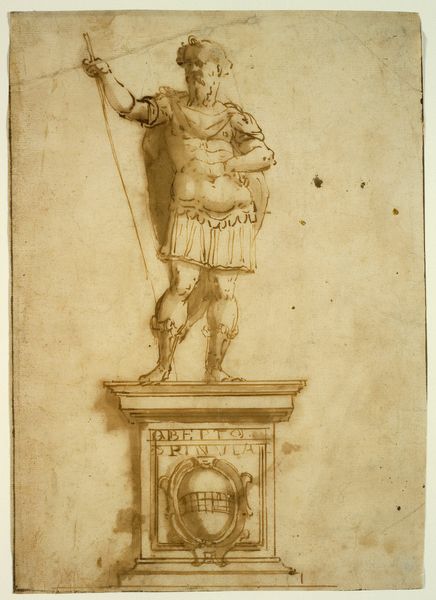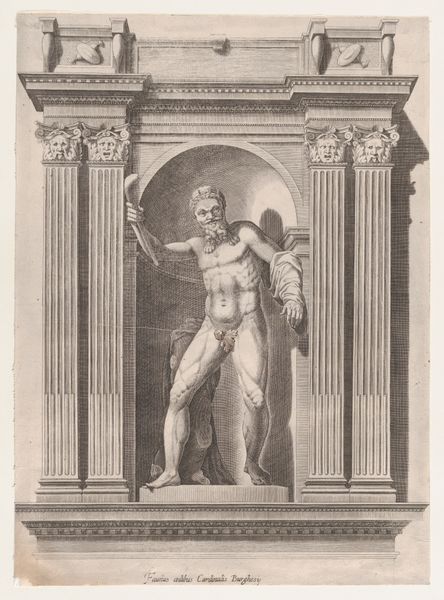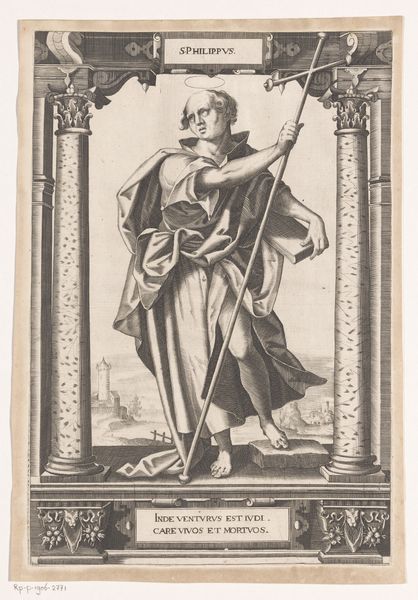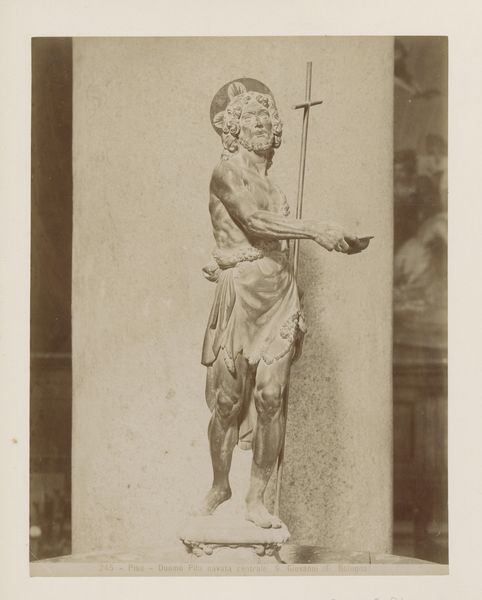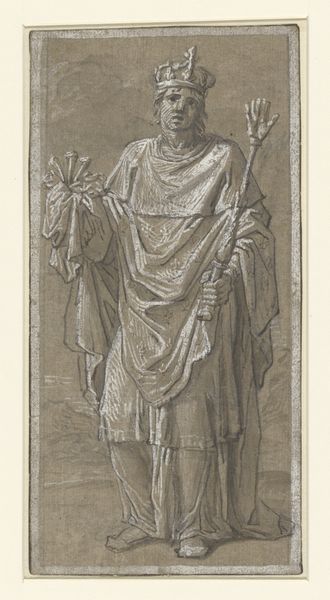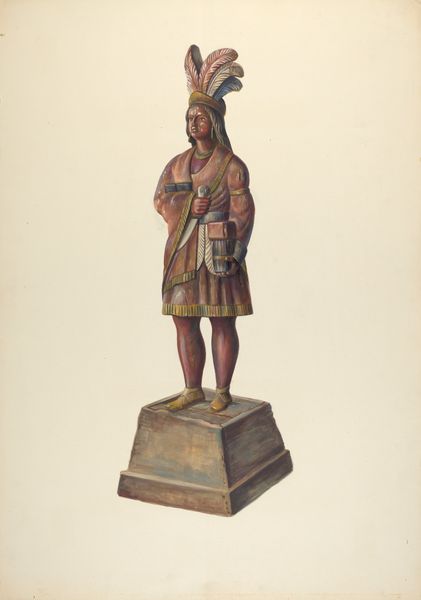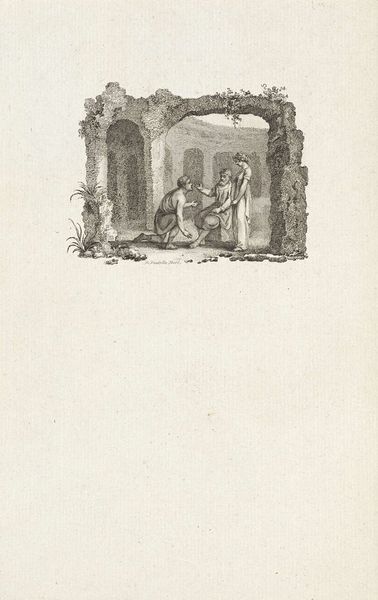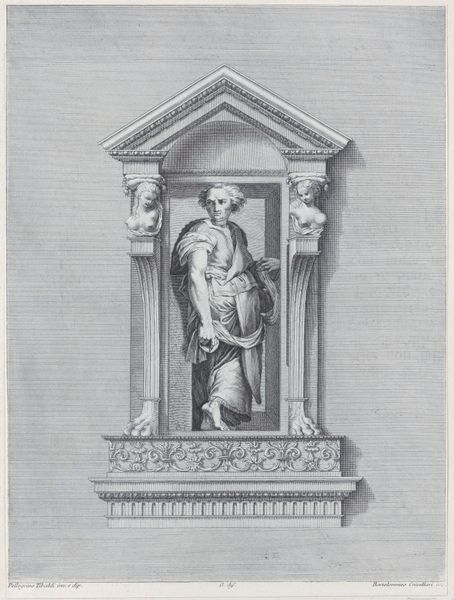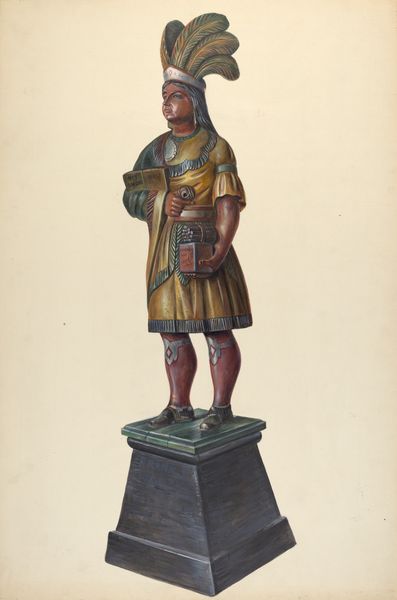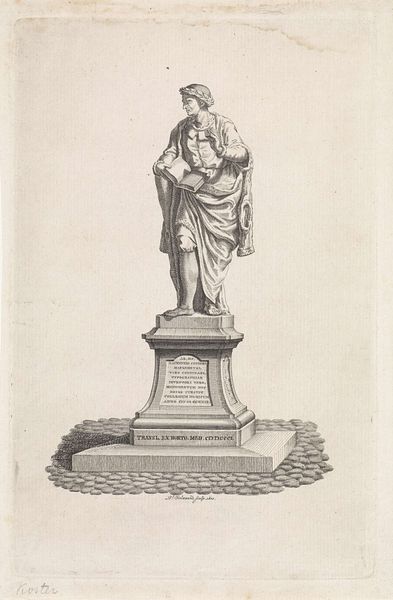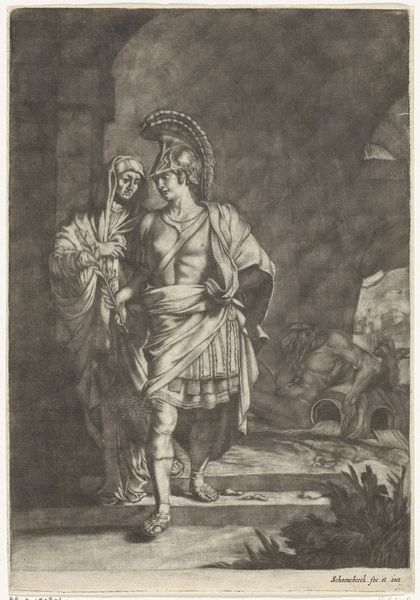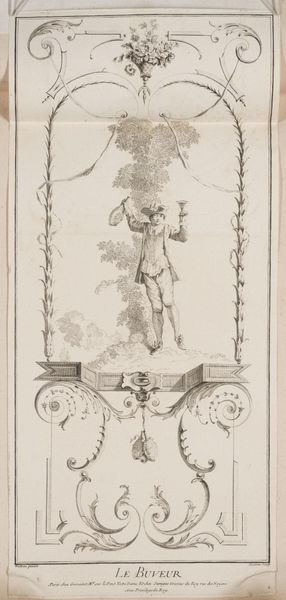
painting, watercolor
#
portrait
#
neoclacissism
#
painting
#
landscape
#
watercolor
#
ancient-mediterranean
#
watercolor
Dimensions: height 160 mm, width mm
Copyright: Rijks Museum: Open Domain
Curator: Let's take a look at "Bronzen beeld van keizer op het marktplein van Barletta" – or "Bronze Statue of an Emperor in the Market Square of Barletta". It is a watercolor landscape dating back to 1778, and was created by Louis Ducros. Editor: The statue looks so serene and stately. The grey tones make the entire composition look both timeless and a bit melancholic. What emperor do you suppose Ducros had in mind? Curator: Indeed. The symbolic elements are powerful here: notice the figure holds a cross high in his right hand, as a standard. The statue stands in contrapposto pose, like that of the emperors of Ancient Rome. It speaks to Neoclassicism’s fascination with antiquity and ancient traditions. Editor: Absolutely! The setting, that recessed arched space, emphasizes that continuity of power from the Roman Empire. It's interesting to see that it seems somewhat neglected in the composition, if you consider the potted plants haphazardly hanging around the entryway. And why does Ducros feature a representation of Barletta, when its citizens are largely absent from this artwork? Curator: I read those architectural choices very differently. The arches echo imperial power and protection, like an architectural halo around the statue, with its own sense of cultural memory. The building could have been in disuse and abandonment. Yet, in Ducros' artistic reconstruction, Barletta’s own identity is closely interwoven with the narratives and continuity of powerful images. Editor: An image meant to legitimize rule? Still, what I can’t overlook is the fact that, while this artwork might speak of grandeur, the materials chosen—watercolor, paper—aren't those of empires and powerful rulers. There is something self-conscious about the whole endeavour. Curator: It speaks, perhaps, to the 18th-century imagination as much as it reflects on the real world: a world of Grand Tours of ancient sites for aristocrats. The statue thus becomes an object of contemplation, a site where memory and imagination converge, and, indeed, contest. Editor: It reminds us that images are not neutral carriers of information but are instead embedded in networks of power. Ducros seems acutely aware of the performative aspect of historical memory and the potential for its selective and, to an extent, imaginative deployment. Curator: What a wonderful lens through which to consider the symbolism embedded within Ducros’ delicate wash! Editor: A stark reminder of how symbols survive the ages to signify cultural memory and continuity.
Comments
No comments
Be the first to comment and join the conversation on the ultimate creative platform.
